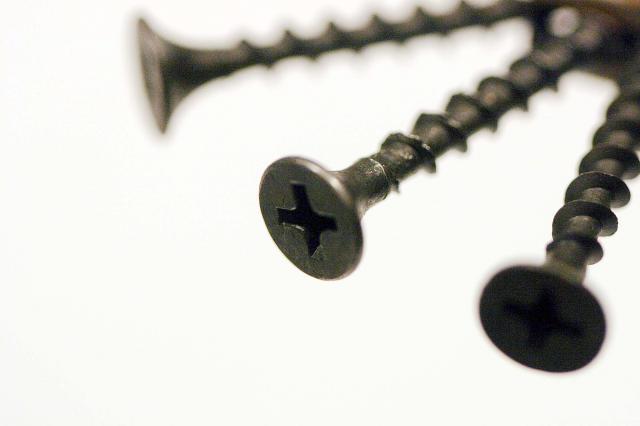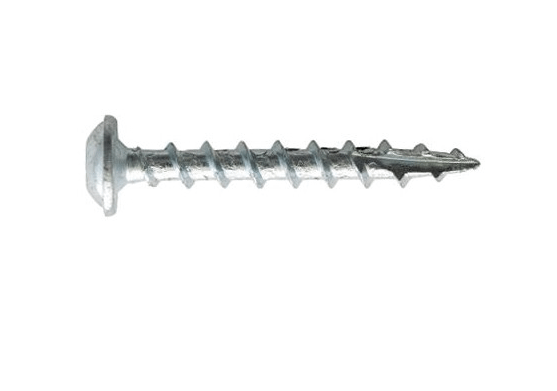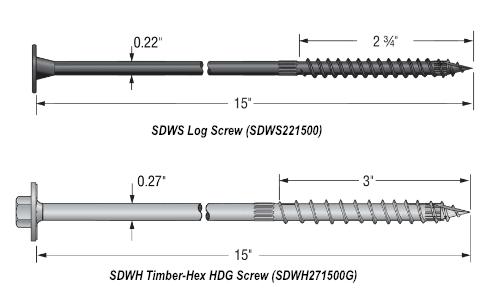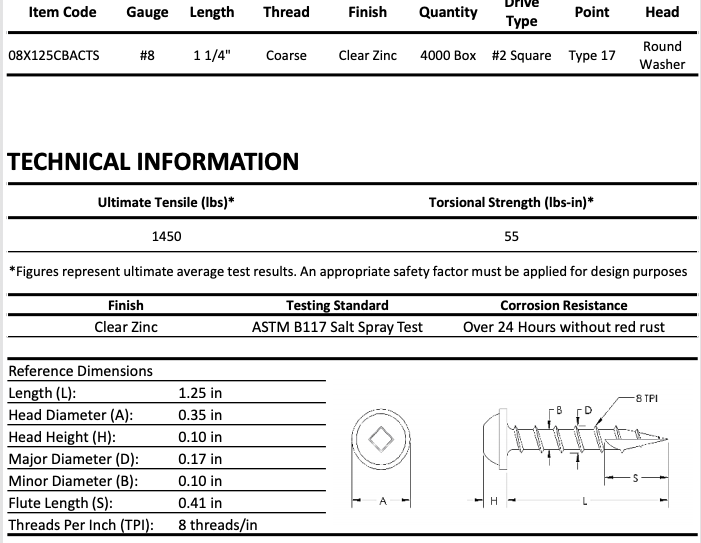How Screws Are Measured

Screws come in a variety of types and sizes for an endless number of construction tasks—from woodworking to metal roof installations. But, choose the wrong length or width, and it can split the wood, or affect the soundness of a structure. As with staples, screw measurement is slightly more complicated than that of nails. Here are three essential measurements every tradesperson should know.

Screw Measurement, In Three Parts
There are three main screw measurements: gauge, length, and threads per inch (TPI). When shopping for collated screws at Nail Gun Depot, for instance, you’ll find screws labeled like this: Duraspin #8 x 1-1/4" #08X125CBACTS. So, what do the #8 and 1-1/4" mean?
Screw Gauge
The first number is screw gauge, which refers to the outside thread diameter. This is also known as “major diameter.” Screws with a major diameter less than 1/4” are typically labeled in sizes #0 to #14. Screws with a 1/4" or larger major diameter are labeled in fractions of an inch.
For each gauge size, there is a decimal equivalent. Example: #1 = .073”. That number increases by .013” with each increasing size. For the #8 Duraspin screw (shown below), the decimal equivalent is 0.164”. Engineering Toolbox has a handy screw size chart that lists screw gauges and their decimal equivalents.
Beyond major diameter, screws have other width measurements. The width beneath the threaded part of the screw is known as root diameter or “minor diameter." The measurement of the unthreaded part of the screw (if not fully threaded) is the shank diameter.

Screw Length
The next important aspect of screw measurement is shaft length. In the Duraspin screw mentioned above, the length is the second detail in its label—1-1/4". Shaft length is the part of the screw that drives into a surface.
The length measurement for a countersinking screw is the distance from the top of the head to the tip. This goes for flat-head, bugle-head, trim-head—and any other countersinking screw where the head can be driven beneath a surface.
For a non-countersinking screw, it's the distance from the bottom of the head to the tip. So for hex-, pan-, button-, round-, and truss-head screws, length is measured from directly under the head to the tip. One exception: an oval-head screw, which can be partially countersunk, is measured from the widest point of the head to the tip.
Below is an example of two non-countersinking timber screws from Simpson Strong-Tie. The first screw has a washer head with a low profile. The second screw also has a washer head, but a more prominent hex drive. Note where the length is measured on each.

Threads Per Inch (TPI)
TPI is a measurement of the number of threads in a one-inch section of screw. The TPI measurement occasionally follows the screw gauge with a hyphen. For example, a screw labeled "#10-12" has a #10 gauge with 12 threads per inch. You may have heard the term "thread pitch," which refers to the number of threads per unit of measurement.
Check out the detailed measurements, below, for the Senco Duraspin 08X125CBACTS washer-head screw. The #8 gauge screw has a major diameter of 0.17" and 8 TPI. The screw is 1-1/4" long, a measurement taken from the bottom of the head to the point.

If you're shopping for collated screws and need help, contact Customer Service for assistance.
Shop Collated Screws


